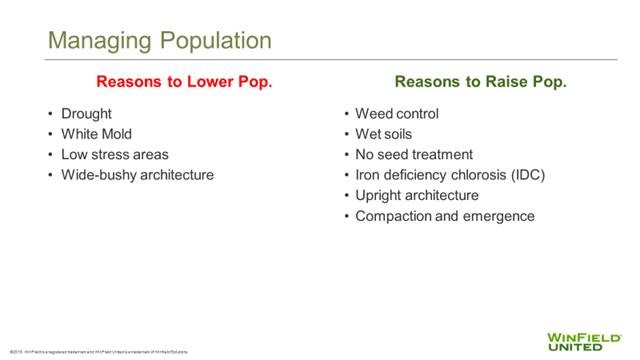by Gregg Gustine GreggG@agpartners.net
One of the most common questions heard in my office this winter has been, “Where can I cut back on my crop inputs?” Everything we do to manage our crop influences yield. When grain prices are down, concentrate on maximizing yields to stay profitable. I start out the planning process each year revisiting the basics. Getting these correct will increase your odds of profitable yield. Here are 9 that I have talked a lot about so far this winter.
- Focus on a good starter program. Doing so can help eliminate issues with stand reduction and uneven emergence. Another benefit of using starter is earlier black layer and dry down which is key to us in the northern corn belt. AYS data in 2018 shows a 7-10% yield increase for using 10-34-0 with Zinc and Ascend verses no starter.
- We also need to protect our nitrogen source with a stabilizer, quite a lot of our 2018 crop ran out of nitrogen as shown by visual observation on the corn and soil and tissue samples we took.
- Now that we have our nitrogen protected, we must get it up into the plant. Cutting back on potash rates will reduce nitrogen efficiency. Potassium helps elevate nitrogen in the plant and a reduced rate or lack of potassium can raise your efficiency rate above one pound per bushel instead the desired .8 to.9 pounds per bushel.
- A proper application of phosphorus (DAP) will help get the seedling off to quick and healthy start. Phosphorus deficiency in young corn will turn the leaves purple and inhibits photosynthesis. Make sure your soil test matches up with you yield goal.
- Sulfur (AMS) is also required by the plant. Sulfur helps move nitrogen around the plant to where it is needed. Rate and timing are important.
- We can’t forget the soybeans, a sixty-bushel bean crop requires 150 pounds of potash and 50 pounds of DAP. Cutting back on bean fertilizer can reduce yield and increase likelihood of weak, disease susceptible plants.
- Soybean seed treatments protect against seedling diseases that decrease plant stands. Keeping the young plants healthy preserves yield potential. Variable rate planting soybeans in 2018 averaged 1.9 bushels better in our side by side comparisons. Trends on planting population have gone down, what is the right plant population? It depends, see the slide below to look for reasons to increase or decrease. Harvest population is key, and we see big swings in emergence in different zones seed treatment is a great investment to counteract this. Looking at the variable rate soybean planting slide you can see variable rate planting out yielded straight rate planting because A zones like to be planted at a lower population than C zones. Typically, an A zone is planted at 130,000 seeds per acre and a C zone is planted at 170,000 seeds per acre.


- Fungicide helps us maximize the corn plant’s genetic yield potential. Ag Partners 2018 AYS data shows an average yield response to fungicide on corn of 18.63 bushel. Not all varieties of corn respond equally to a fungicide application, so make sure and consult your agronomist about responsive hybrids. Soybeans also showed an excellent response to fungicide and insecticide in 2018. When applied at proper timing (R-3), AYS data showed an average response of 8.017 bushels over untreated acres.
- Selecting the right variety is always going to be key while planning but making the variety you choose work best for where you put it is one way to find extra yield. Look at this chart. DK4972 is a fixed ear and responds very well to pushing the plant population. Look at DK 5438, it has a flex ear and doesn’t respond as well at higher populations. You need to know how your hybrid responds to nitrogen, fungicide, as well as population. These 3 things will help you get a lot more out of your hybrid selection.

So back to “Where can I cut back on my crop inputs?”, Working together with your Ag Partners Agronomist to get the basics right will help you maximize your yield by caring for our crop from start to finish which reduces our cost per bushel and increases your profit potential.



